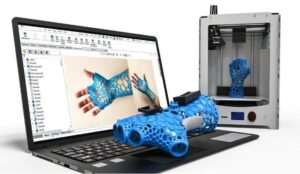Why Use A Free Autocad Alternative For Your Projects?
Computer-aided design (CAD) software has become a cornerstone for engineers, architects, designers, and hobbyists. For decades, AutoCAD has dominated the CAD market, offering advanced tools for 2D and 3D design. However, not everyone can afford AutoCAD’s high price point or requires its extensive features. Enter free AutoCAD alternatives—solutions that cater to professionals, students, and hobbyists seeking cost-effective and efficient tools. Let’s explore why using a free AutoCAD alternative can be the right choice for your projects.
Cost-Effective Solutions for Budget Constraints
One of the most compelling reasons to consider a free AutoCAD alternative is cost savings. AutoCAD’s subscription fees can be prohibitive, especially for small businesses, freelancers, and students.
Free alternatives eliminate the financial barrier, making CAD accessible to a broader audience. Whether you’re a student learning design, a startup working on tight budgets, or a hobbyist designing for fun, free CAD software allows you to allocate resources to other aspects of your projects without compromising on design capabilities.
Examples of Free CAD Software:
LibreCAD: Ideal for 2D drafting and simple designs.
FreeCAD: Excellent for 3D parametric modeling.
TinkerCAD: A browser-based tool perfect for beginners and educational purposes.

Feature-Rich Tools Without Compromise
Contrary to the belief that free software lacks functionality, many free AutoCAD alternatives offer robust tools to meet your project needs. While they may not include every feature of AutoCAD, these tools often focus on essential functionalities and provide user-friendly interfaces.
Key Features to Look For:
- 2D Drafting and Drawing: For creating floor plans, mechanical drawings, and technical schematics.
- 3D Modeling: Useful for complex designs in engineering and architecture.
- File Compatibility: Many free alternatives support standard file formats like DWG, DXF, and STL, ensuring smooth collaboration and workflow.
- Customization: Some software offers plugins or add-ons to expand capabilities.
For instance, FreeCAD provides parametric modeling that allows users to easily edit designs by going back into their model history, making it highly versatile for iterative projects.
Accessibility for Beginners and Students
Free CAD software often serves as an entry point for beginners who may find AutoCAD overwhelming due to its complexity and steep learning curve. These alternatives are designed with user-friendliness in mind, featuring intuitive interfaces and simplified workflows.
Why This Matters:
- Lower Learning Curve: Beginners can quickly grasp the basics and start creating.
- Educational Resources: Many free tools provide tutorials, forums, and community support to help new users.
- Skill Building: Learning on free software equips users with foundational skills that are transferable to more advanced CAD programs like AutoCAD.
For instance, TinkerCAD’s drag-and-drop interface and tutorials make it a popular choice for students and educators.
Open-Source Flexibility and Innovation
Many free AutoCAD alternatives are open-source, allowing users to customize the software to their specific needs. This flexibility is particularly beneficial for developers and businesses that require tailored solutions for unique projects.
Advantages of Open-Source CAD Tools:
- Community-Driven Improvements: Open-source communities continually enhance features, fix bugs, and add updates.
- Custom Plugins and Scripts: Advanced users can create plugins or scripts to automate repetitive tasks or introduce new functionalities.
- Transparency: Users have complete access to the source code, ensuring greater control and security.
LibreCAD and FreeCAD are notable open-source examples, empowering users to adapt the software to their workflows.
Compatibility with Industry Standards
One concern when switching to a free AutoCAD alternative is compatibility. Thankfully, many free CAD programs support widely used file formats like DWG, DXF, and STL. This compatibility ensures that you can collaborate seamlessly with team members or clients who use AutoCAD or other professional-grade tools.
Tips for Ensuring Compatibility:
- Always verify the file formats supported by the software.
- Test conversions between AutoCAD and the alternative to avoid data loss.
- Use software with robust export/import features for smooth integration into your workflow.
Cloud-Based Solutions for Remote Work
As remote work becomes the norm, the demand for cloud-based CAD solutions has grown. Free AutoCAD alternatives like TinkerCAD and SketchUp Free offer browser-based access, enabling users to work from anywhere with an internet connection.
Benefits of Cloud-Based CAD Tools:
- Portability: Access your projects from any device without needing installations.
- Collaboration: Share designs with teammates in real time.
- Automatic Updates: Always work with the latest version of the software.
These tools are especially valuable for teams collaborating across different locations or individuals who need flexibility in accessing their designs.
Eco-Friendly and Lightweight Solutions
Free AutoCAD alternatives often require less computing power, making them ideal for users with older hardware or eco-conscious goals. Lightweight software reduces energy consumption and enables smoother operation on devices with limited specifications.
Ideal for:
- Students using basic laptops.
- Small businesses with limited IT infrastructure.
- Designers working on-the-go with tablets or low-power devices.
Encouraging Innovation Through Accessibility
By removing financial and technical barriers, free CAD software fosters creativity and innovation. Hobbyists, makers, and startups can experiment with ideas without worrying about software costs. This accessibility has democratized design, allowing more individuals to contribute to industries like engineering, architecture, and 3D printing.
Success Stories:
- Makerspaces and DIY communities often rely on free CAD tools for prototyping and collaborative projects.
- Startups have used free alternatives to design early product iterations, saving costs during the development phase.
Choosing the Right Free AutoCAD Alternative
With numerous options available, selecting the right free AutoCAD alternative depends on your specific needs and project requirements. Here’s a quick guide to help you decide:
Assess Your Project Scope:
- For 2D drafting: Consider LibreCAD or NanoCAD Free.
- For 3D modeling: Explore FreeCAD or SketchUp Free.
- For beginners: Try TinkerCAD.
Check System Requirements: Ensure the software runs smoothly on your device.
Evaluate Community Support: Active forums and tutorials can make a significant difference when learning new tools.
Test Compatibility: Verify that the software supports essential file formats for your workflow.
Conclusion
Using a free AutoCAD alternative can be a game-changer for individuals and organizations seeking cost-effective, flexible, and accessible CAD solutions. These tools not only reduce financial strain but also offer feature-rich platforms tailored to various project needs. Whether you’re a student exploring design, a professional working on a budget, or a hobbyist turning ideas into reality, free CAD software empowers you to create and innovate without limits.
Embrace the freedom and flexibility of free AutoCAD alternatives and take the first step toward achieving your design goals today.




